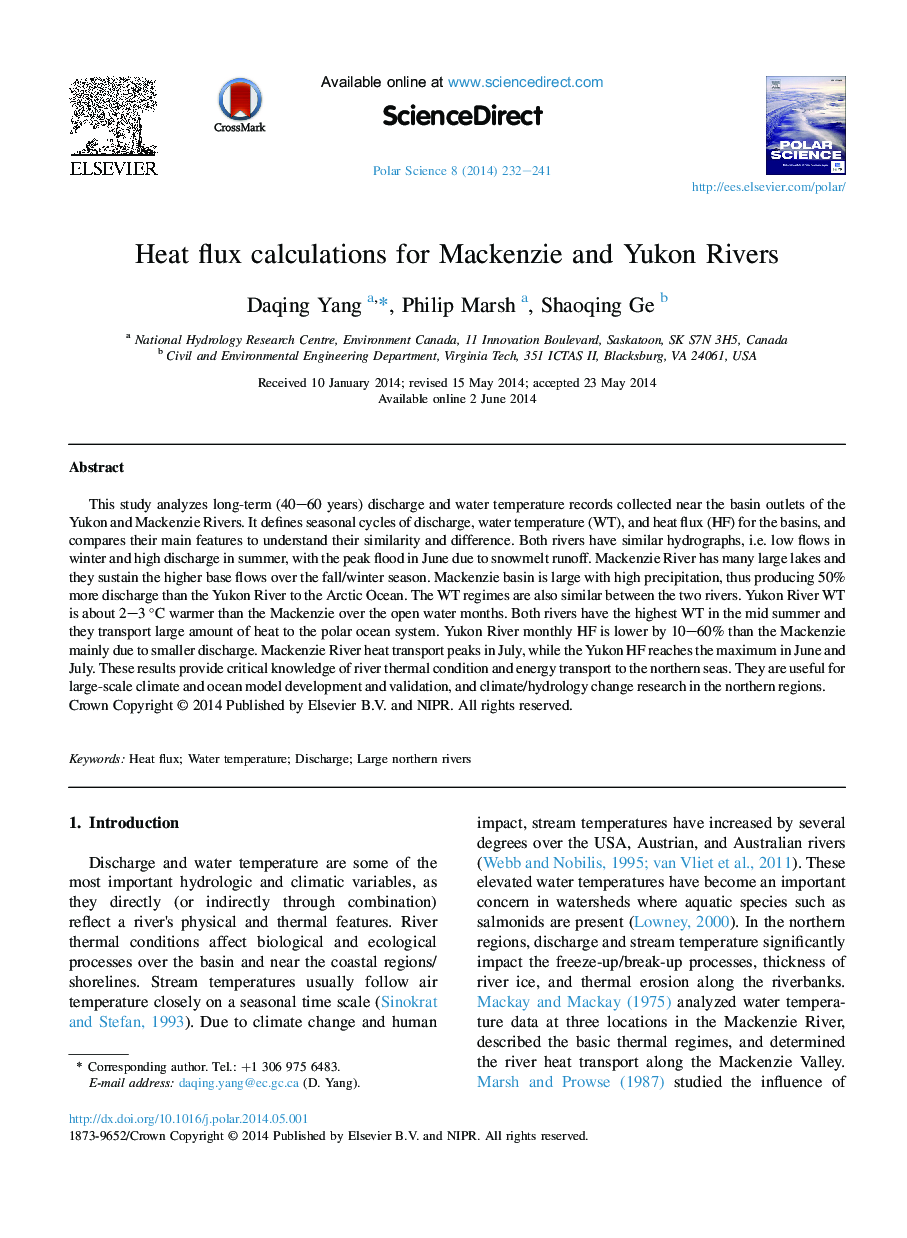| Article ID | Journal | Published Year | Pages | File Type |
|---|---|---|---|---|
| 4683176 | Polar Science | 2014 | 10 Pages |
This study analyzes long-term (40–60 years) discharge and water temperature records collected near the basin outlets of the Yukon and Mackenzie Rivers. It defines seasonal cycles of discharge, water temperature (WT), and heat flux (HF) for the basins, and compares their main features to understand their similarity and difference. Both rivers have similar hydrographs, i.e. low flows in winter and high discharge in summer, with the peak flood in June due to snowmelt runoff. Mackenzie River has many large lakes and they sustain the higher base flows over the fall/winter season. Mackenzie basin is large with high precipitation, thus producing 50% more discharge than the Yukon River to the Arctic Ocean. The WT regimes are also similar between the two rivers. Yukon River WT is about 2–3 °C warmer than the Mackenzie over the open water months. Both rivers have the highest WT in the mid summer and they transport large amount of heat to the polar ocean system. Yukon River monthly HF is lower by 10–60% than the Mackenzie mainly due to smaller discharge. Mackenzie River heat transport peaks in July, while the Yukon HF reaches the maximum in June and July. These results provide critical knowledge of river thermal condition and energy transport to the northern seas. They are useful for large-scale climate and ocean model development and validation, and climate/hydrology change research in the northern regions.
